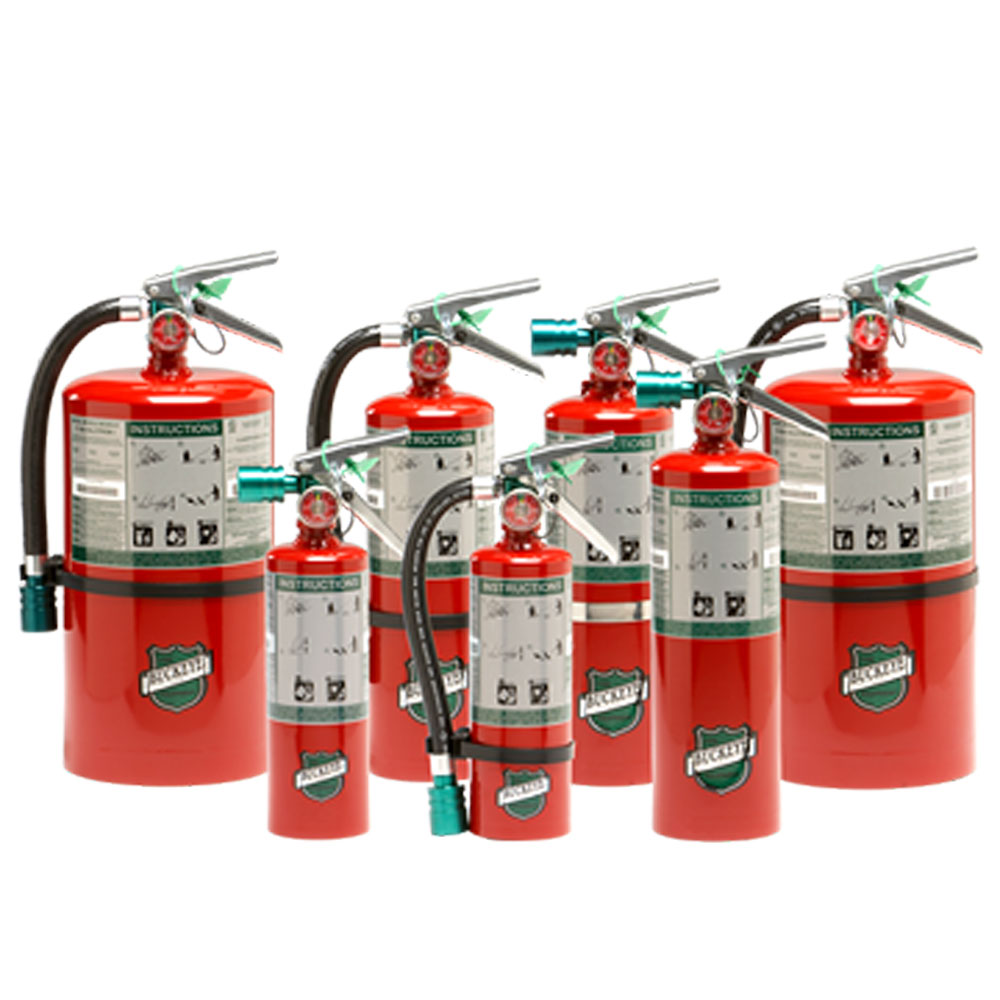 04
Oct
04
Oct
A Guide To Understanding Commercial Fire Extinguisher Sizes
- 0 Comment(s)
- October 4, 2024
When it comes to fire safety, choosing the correct fire extinguisher size is necessary for making sure you can effectively handle a fire emergency. Fire extinguisher sizes are determined based on the types of fires they are designed to combat and their rated capacities. Knowing how fire extinguisher sizes work and what they mean can help you make the right choices for your commercial space, guaranteeing safety and compliance.
Fire Extinguisher Classifications Explained
Before exploring fire extinguisher sizes, it’s important to understand the different types of fires and the extinguishers designed to combat them. Commercial fire extinguishers are categorized into classes, each intended for a specific fire.
- Class A: Used for ordinary combustibles such as wood, paper, and fabric. These are the most common types of fires in residential and commercial settings.
- Class B: Designed to handle fires involving flammable liquids, such as gasoline, oil, or grease. Class B extinguishers are essential for areas where these materials are stored or used frequently, like gas stations or industrial facilities.
- Class C: Intended for electrical fires. While these extinguishers don’t have a numerical size rating, they are designed to be non-conductive, making them safe for use on electrical equipment.
- Class D: For flammable metals typically found in industrial environments. These extinguishers are less common in everyday commercial settings but are vital in certain industries.
- Class K: Created specifically for kitchen fires involving cooking oils and fats. These are critical in restaurant kitchens and food service environments.
In most commercial settings, the most common type of fire extinguisher is the ABC multipurpose extinguisher, which can handle Class A, B, and C fires effectively. This versatility makes it an ideal choice for a wide range of environments, from offices to factories.
Understanding Fire Extinguisher Size Ratings
Labels like 2A:10B indicate fire extinguisher sizes, which brings information about the extinguisher’s effectiveness against different types of fires. Here’s how these ratings break down:
- Class A Rating: The number preceding the “A” (e.g., 2 in 2A) refers to the extinguisher’s water equivalency. Each unit in this rating represents 1.25 gallons of water. So, a 2A-rated extinguisher has the equivalent firefighting power of 2.5 gallons of water.
- Class B Rating: The number before the “B” (e.g., 10 in 10B) indicates the square footage the extinguisher can cover. A 10B-rated extinguisher can effectively combat a fire covering 10 square feet.
- Class C Rating: This class doesn’t come with a numerical rating. Instead, the “C” simply means the extinguisher is safe to use on electrical fires.
With this information, building managers and safety officers can make informed decisions about which extinguishers are appropriate for specific areas. Larger spaces with higher fire risks will require extinguishers with higher A and B ratings.
Choosing the Right Fire Extinguisher Size for Your Business
The size of the fire extinguisher you need depends on several factors, including the size of the room, the potential for fire spread, and the ease of use for employees. Here’s what to consider when selecting fire extinguishers for your commercial space:
- Room Size: Smaller rooms, like offices or retail spaces, can typically be protected with a 5-pound fire extinguisher rated 2A:10B. These extinguishers are easy to handle and give sufficient coverage for most smaller fires. Larger areas, such as warehouses or manufacturing floors, may require extinguishers with higher ratings, such as 4A:60B or 10A:80B. These extinguishers can combat larger fires over wider areas.
- Fire Spread Potential: The likelihood of fire spreading quickly should also be taken into account. High-risk areas, such as kitchens or industrial zones, benefit from larger extinguishers that can control fires over a broader surface area. In these spaces, it may also be necessary to have multiple extinguishers placed strategically throughout the facility.
- Employee Capability: While larger extinguishers may provide more fire-fighting power, they are also heavier and more challenging to operate. A 5-pound extinguisher is manageable for most employees, while larger extinguishers (10 pounds and above) may be difficult for some to use effectively. In such cases, it’s often better to install multiple smaller extinguishers rather than relying on a single, large unit.
Importance of Regular Maintenance and Commercial Fire Extinguisher Service
Regular maintenance is critical for making sure that your fire extinguishers function properly in an emergency. Over time, factors like rust, pressure loss, and general wear and tear can cause even high-quality extinguishers to fail. This is why regular visual checks and professional inspections are so important. Conducting monthly visual inspections allows you to identify obvious signs of damage, such as corrosion, leaks, or a loss of pressure.
However, annual professional inspections are equally important for a more thorough evaluation. A certified commercial fire extinguisher service guarantees your extinguishers meet regulatory requirements and remain fully charged. Technicians will inspect critical components, recharge any extinguishers that have been used, and test the pressure to assure everything is functioning as intended.
In addition to these checks, some fire extinguishers, depending on their type, require hydrostatic testing every 6 to 12 years. This test assesses the structural integrity of the cylinder to make sure it can safely handle the internal pressure. Without hydrostatic testing, the extinguisher could potentially fail during an emergency.
Regular maintenance doesn’t just guarantee that your fire extinguishers are operational; it also helps you stay compliant with local and national fire safety regulations. Failing to maintain your extinguishers could result in fines, penalties, or worse—compromised safety during an emergency.
The Importance of Fire Safety Training for Employees
In addition to having the right fire extinguishers, proper fire safety training for employees is crucial to guarantee a swift and effective response during an emergency. Training programs should cover how to correctly identify different types of fires, use the appropriate fire extinguisher, and understand when it’s safe to attempt to extinguish a fire versus evacuating the building.
Regular fire drills and hands-on practice with extinguishers will help employees feel confident and prepared. This proactive approach reduces the risk of injury, secures a faster response time, and helps prevent minor fires from becoming major incidents. Incorporating fire safety training into your workplace’s regular safety protocols is key to maintaining a safe, compliant environment.
Why Fire Extinguisher Placement Matters
Placing fire extinguishers in easily accessible locations is just as important as choosing the right size. Fire extinguishers should be mounted in visible, clearly marked areas where they can be quickly accessed during an emergency. High-risk areas such as kitchens, electrical rooms, and storage areas for flammable materials should have extinguishers readily available.
It’s also needed to train employees on where fire extinguishers are located and how to use them correctly. This helps ensure a rapid response to a fire emergency, minimizing damage and potentially saving lives.
At Yadkin Fire & Safety, we specialize in helping businesses choose the right fire extinguisher sizes and maintain them for optimal safety. Whether you’re a small business or a large facility, we offer comprehensive solutions, including fire extinguisher sales, installation, and ongoing maintenance through our commercial fire extinguisher service.
Our team provides superior customer service, fast responses to service requests, and competitive pricing. We focus on educating our clients, making sure they have all the information needed to make informed decisions about fire safety. Additionally, we offer a quick turnaround time for cylinder services, ensuring that your fire protection equipment is always up to date.
We are proud members of BBB (A+), NFPA, NCAFED, NAFED, and ICC, and our DOT-certified cylinder retest facility further demonstrates our commitment to quality and compliance.

